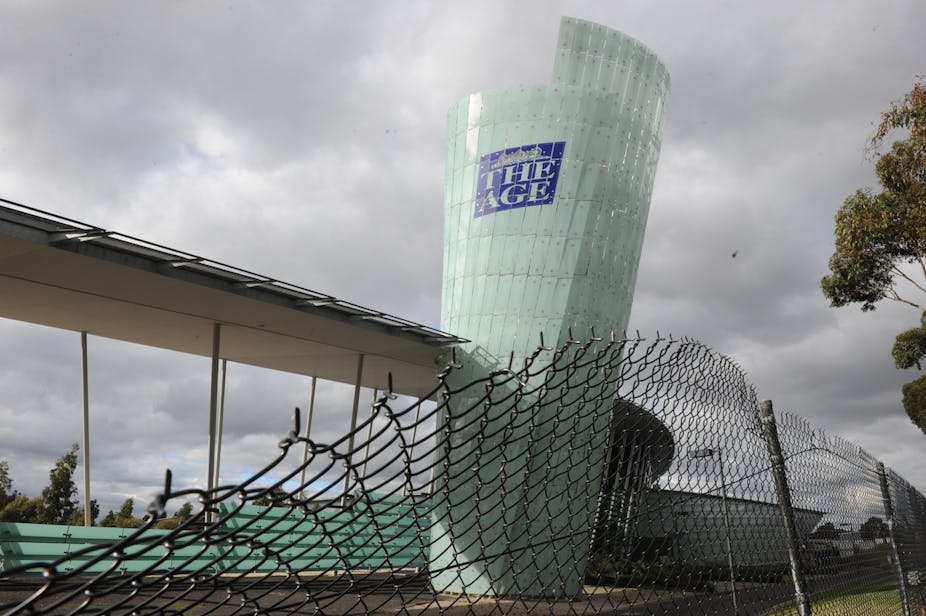When Gina Rinehart’s Hancock Prospecting recently sold all its shares in Australian media company Fairfax, chief development officer John Klepec took the parting shot that Fairfax management had “no workable plan” to turn the company around. In reality, the ship is turning, although incredibly slowly.
In the first half of the 2015 financial year Fairfax’s profit dropped 86% from the previous year. But there are some positive signs when scrutinising Fairfax’s figures more closely. For example, the number of digital subscribers for Fairfax’s metropolitan newspapers, including The Age, The Sydney Morning Herald and The Australian Financial Review, grew 8.2% from 146,000 to 158,000. The company’s revenue from digital subscriptions rose 61% from A$9.7 million to A$15.8 million. More positively, its digital advertising revenue rose to 14.8% to A$106 million.
The bad news is digital subscriptions represented only 1.7% of the company’s total revenue, and Fairfax is still strongly reliant on its print revenues. In the first half of 2015 financial year, print circulation and print advertising brought in A$242 million in revenue, almost 50% more than its combined revenue from digital operations.
To compare, in the 2014 fiscal year, The New York Times had 910,000 paid digital subscribers, a 20% increase from the previous year. The revenue from its digital-only subscriptions rose 13.6% from previous year, and the total revenue of digital-only subscriptions was US$169 million. This represents 10.6% of its total revenue. Clearly, Fairfax has still some way to go even though The New York Times might not be the fairest comparison point.
Native advertising and classifieds the right remedy?
When looking at the data more closely, interesting trends start to appear. It seems that paywalls have gone to the back burner as newspaper publishers are increasingly betting on native advertising, listing services and online classified advertising. Companies such as BuzzFeed have been dominating the native advertising market, and news publishers are now following suit.
The New York Times Company’s 2014 results were boosted by digital advertising, and especially native advertising (sponsored content). In the fourth quarter of 2014, the company saw a 19% increase in digital advertising revenue thanks to its “paid posts” native advertising platform. Mark Thompson, chief executive of the company, commented that “we delivered digital ad growth for all four quarters, highlighted by double-digit strength in the second half of the year, including a 19% gain in the fourth quarter.” APN, owner of The Australian Radio Network, is also gambling with content marketing and native advertising. APN is taking a majority stake in the new company, Emotive, which specialises in native ads (editorial-style content).
American news publisher Gannett has also started to expand in online classified advertising and listing services. Last year the company took a controlling stake in US-based Classified Ventures, which runs the car sales site Cars.com. Thanks to Cars.com and its online job-site CareerBuilder, the company’s digital revenue rose 22.8% in 2014 from the previous year. In February this year, global publishing giant Axel Springer also formed a new joint venture in real estate advertising called Immowelt, in order to gain new advertising dollars.
Last year Rupert Murdoch’s News Corporation and its Australian real estate website REA Group bought American real estate listing site Move.com. The acquisition has clearly boosted News Corporation’s profits, as in the second quarter of 2015 the revenues of its digital real estate services rose 50% from the previous year.
Too little, too late?
So they are all doing it. But what about Fairfax? Fairfax lost online classified advertising markets in Australia to Seek, REA and Carsales as the company’s management failed to understand the internet, and to purchase any of these companies. From its results, it’s obvious Fairfax has put its eggs in one basket: its real estate advertising site Domain to compete with realestate.com.au. In January Fairfax increased its ownership in Metro Media Publishing Holdings (MMPH) from 50 to 100% in order to expand its digital property businesses. MMPH has an extensive portfolio related to real estate markets, and it also includes reviewproperty.com.au.
Commenting on the 2015 half-year results, Fairfax’s chief executive officer Greg Hywood stated that “Domain continues to power ahead in expanding its national footprint”. In the first half of 2015, Domain’s digital revenue rose 37.8% from the previous year.
Fairfax is expanding its classified advertising and listings portfolio in order to build new digital revenue streams it desperately needs. But it could still prove to be too little too late. As the latest figures from Audited Media Association of Australia (AMAA) show, the weekday print circulation of the SMH fell 13% in the last quarter of 2014, and The Age’s 18% from the same time last year. In comparison, The Australian’s weekday total print sales declined 6.7% during the same period.

